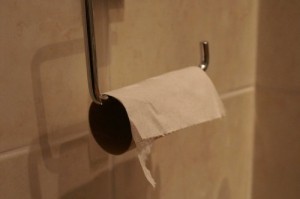Now that the false nostalgia for the ’80s has been supplanted by false nostalgia for the ’90s, we can now focus on something that, unlike your affected fondness for neon, is actually something quite familiar: being poor.
Despite what the government says, our economy being in the shitter is nothing new. We faced it in the late ’80s and got through it alright, bangles and big hair aside. Here are some of the ways our parents got by and gave us the middling-middle-class childhood we so richly deserved. [Note: if you grew up rich, then this will be a nice look into how the rest of us lived. Also, my nine-year-old self hates you.]
Product Substitution
Do you remember when Kris Aquino started the ultimately pointless trend of using horse shampoo on her hair to make it as shiny and smooth as that of a horse? We replaced our regular shampoo with a product that was 300% more expensive but had the same basic ingredients.
Doing it ’80s style is sort of the same thing, except in reverse. In the ’80s, people were so hard up that some of us used laundry soap to bathe with.
This was, I assume, the main selling point of Perla soap. A soap that can clean both you and your clothes was certainly value for your money back then. The bonus of being able, although retardedly, to wash your clothes with you still in them probably saved gallons of precious water at a time when tap water was rationed making Perla a winner in so many ways.

Pic Unrelated
The practice is catching on, apparently, with one user swearing that it “erases fifty layers of dirt on my face and body.” Why anyone would allow fifty layers of dirt to accumulate is not for us to judge, ours is just to do or die.
Buying Less
It’s common sense, I guess. When you have less, you buy less. Despite the supposed savings from buying in bulk, Filipinos in the ’80s bought only as much as they needed. Note that “need” is determined more by parents than by children, thus many of our basic needs were actually unmet. The need to gorge ourselves on bacon, for example, and the need to have games for the Nintendo Family Computer.
Buying less has become a common practice now, too, with econo-packs and budget sizes offered for almost every product known to man. Winston began offering cigarettes in half-packs of 10 sticks last year, promptly followed, and trumped, by Marlboro with its 5-stick foil packets that proudly proclaimed that not even poverty can beat nicotine addiction.
Never mind that a friend in advertising says that it was more of a marketing gimmick to get people to buy more cigarettes, smaller-serving packages are the next big, well, small, thing. Watch out for single-puff cigarette stubs and 5-sheet packets of toilet paper next.

New Joy Budget Roll
Sardines Forever
Because of the frequent power outages and actual lack of money in the late ’80s, Filipinos could not afford to stock up on perishable goods. Sardines (in goddamned tomato sauce) were a godsend for homemakers trying to make ends meet. They were cheap, and they came in a can, and only an accident of geography kept it from being the subject of a novelty song by Save Ferris.
Breakfasts back then were a bit like the Monty Python Spam sketch. Sardines, rice and sardines, sardines, bread and sardines, sardines sauteed in onions, rice and sardines… The list could go on, and was only limited by your mom’s imagination and love for you. The only difference, I guess, is that asking for “something with a little less sardines in it” resulted in yet another throwback to the ’80s: a savage and merciless thrashing from your father.
Surely things won’t go that far, you say? Surely we won’t have to resort to stocking canned goods because daily brownouts are a thing of the past? Well, you might as well join Ang Bandang Surely because you’d be as wrong as using that pun was. You can thank the residents of Dasmarinas Village for the dubious gift of massive power interruptions.

"Ang Bandang Surely?"
Luckily, there are gourmet sardines on the market now: spanish-style sardines, sardines in corn oil, sardines in olive oil, sardines in a beret.
Unluckily, they are more expensive than your regular sardines in tomato sauce. Also, even if you could afford the gourmet kind, there is still the sad reality that no matter how much you dress it up, sardines are sardines. The upside is you can pretend that Hakone and Ligo are Japanese delicacies as you eat by candlelight (fooling nobody, incidentally.)

73 Comments